Home page
» HISTORY
» Our Historical Leaders
Our Historical LeadersHistorical leaders are persons that may affect the historical processes and able to lead the masses to follow him to get success in any event. Each country is owed to their historical leaders for important place in the history of the world. Azerbaijan having a high state of culture since ancient times from time to time had grown up leaders in history that could engrave the name of homeland forever. Let us to make you familiar with the historical mission of those leaders: 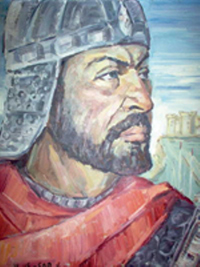 He was the last ruler of the Albanians. Being a part of the Sasanian he demonstrated his skills of military leader against the Arabs and Sasanian ruler presented him very valuable gifts. Using the chance from weakening of the Sasanian Empire, Albania got its independence and he face a pressure from the south by Sasanian Iran and from the West by Byzantine, and from the north the Turk-khazars attempted to invade the country and from the south the Arabs launched attacks. At such time the political maneuvering made by a historical leader and political figure Javanshir among Caliphate, the Byzantine and Sassanide among had allowed to protect his country’s independence more than 20 years after his death. 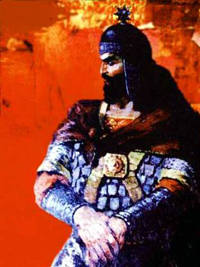 Babak Khurramid was a symbol of the national-liberation movement in Azerbaijan, a prominent Azerbaijani commander and political figure. It is an indication of the nature of leadership of Babek that since the early years of his leadership of the movement the Khurramid movement became popular in Azerbaijan. In 819 shifting of the capital from Khorasan to Baghdad informs about the strengthening of Khurramid movement and fear of Caliphate. According to sources in the Middle Ages, Khurramids could kill 225500 soldiers and commanders of the opposite side during this period. The talent of Babak not just as a military leader but also as a political figure was reflected in negotiations with the Byzantine emperor at the eve of defeat of the movement. This movement is considered to be a major political force, which led to defragmentation of a powerful Abbasid state in different states. 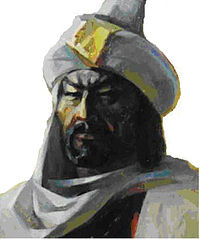 Shamsaddin Eldaniz (the years of reign: 1136-1175) He became the founder of Eldanizide state and could unify a large area stretching from the Caucasus Mountains to the Persian Gulf. The lands under the power of Eldanizide stretched from of the Tbilisi gates to Mekran. Azerbaijan, Arran, Shirvan, Jabal, Hamadan, Gilan, Mazandaran, Isfahan and Ray were under its reign. Shamsaddin Eldaniz had carried out successful fight against the Georgian czars that for more than 2 centuries made continuous marches against our country and in 1175 had defeated Georgians and so could stabilize the situation in the western borders and the old borders were restored, too.  Sheikh Ibrahim Darbandi (the years of reign: 1382-1417) Sheikh Ibrahim is the first representative of Darbandi Sirvanshahs, the relative dynasty to Mazyadis dynasty. Sheikh Ibrahim was a prominent political figure. He ruled at the period of foreign polical events associated with aggressive wars in the Middle East waged by Teymur. Using interstate turmoil in Tabriz in 1406 and leaving the dependence on Teymurid, Sheikh Ibrahim mover to Tabriz with own troops and tried to annex South Azerbaijan in order unite the territories in one state. He achieved this to some extent, but for a small period of time. 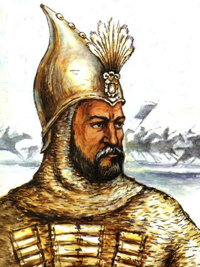 Uzun Hasan (the years of reign: 1468-1478) He founded Aggoyunlu state in 1468. The tolerance of Uzun Hasan to faith of the people, and other religion played a stabilizing role in this huge and multy tribed country. Uzun Hasan established diplomatic relations with the Ottoman Empire, the Venetian Republic, the Moscow kingdom, the Golden Horde, Poland, Austria, Hungary, Czech Republic, Germany, the Papacy, Burgundy, Neopolitan Kingdom, Rhodes, Cyprus, Garaman boyhood, Egypt, India and other countries. Uzun Hasan invited experts from Europe in order to improve the army and establish the regular army. Experts from Venice and other countries have helped Uzun Hasan to manufacture firearms. At the same time the manufacture of guns began in the country, the foundation for the preparation of artillery personnel was laid. 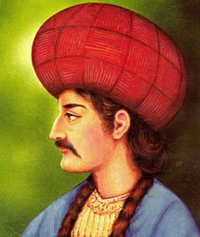 Shah Ismail Khatai (the years of reign: 1501-1524) In the autumn of 1501 Ismayil entering had declared him as a shah of Safavid state with capital of Tabriz city. At the period of his reign the Azerbaijani Turkic language became as the main language and all correspondence were made in this language at the official level. By uniting all areas in one he could establish a great state at early years of reign and Shah Ismayil conquered Iran, Iraq, eastern Anatolia and Georgia and so he could make Safavide State as powerful state in the Middle East and its area reached 2 million 800 thousand square kilometers. 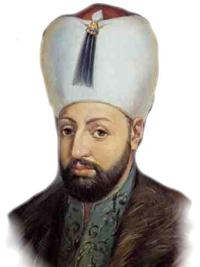 Shah Abbas I (the period of reign: 1587-1629) When Shah Abbas I came to power Azerbaijan almost was went under the control of Ottomans (with the exception of the Talysh region and Ardabil) Shah Abbas I had gained the status of historical leader by carrying out reforms after concluding peace. In order to strengthen the power over Turks, especially on Persians he shifted the capital city to Isfahan. Army has been re-organized. Thus, in addition to qyzilbashs, rifle men, artillery men and ghulam units were created in army. He carried out major construction works, had exempted some cities from tax. He could restore the previous borders of the Safavide state by concluding in 1612 and 1618 peace agreements in Sarab and Marand respectively and by withdrawing the Portuguese from Hormuz he could defeat all threat on its independence once and for all. Thus, the collapsing of Safavids was prevented and it gave new stimulus to the development of state.  Nadir Shah Afshar (the years of reign: 1736-1747) Nadir Shah has achieved a unification of the Turks tribes within the country after came to power, and rendered the exceptional services in the prevention of religious differences, renewed and strengthened the military field. Nadir Shah as came to power in 1736 had annexed Qandahar and Peshawar, passed Jhelum and Atthok Rivers had conquered Lahore in 1738. Then, in 1739 he conquered Delhi, and so became ruler of the vast area from Iraq, iron gate Derbent to Kashmir and Delhi. Nadir Shah retuned from India with 3 billion Indian silver rupees, in addition to countless caravan loaded with gems. He concluded treaties with the Ottoman Empire and Russia could restore the stability in the country even for a short period of time.  Fatali khan Afshar (the years of reign: 1747-1763) He founded khanate of Urmia in the middle of the XVIII century and made his efforts for uniting Azerbaijan. By capturing Karabakh khanate in 1759 he contributed to the strengthening of the khanate of Urmia. As a result, Urmia, Tabriz, Khoy, Karadag, Maragha and Sharab khanates, that is, with the exception of Ardabil and Maku khanates by uniting South Azerbaijan khanates he undertook the leadership mission. The capital of the country was initially Urmia, and later became Tarbriz. After Fatali Khan won the battle against Karim khan Zand that led the struggle for power in Iran he could expand his power in the Central and Western Iran, too  Javad Khan (the years of reign: 1748-1804) He was the last ruler of Ganja khanate. Even in the first years of reign he took back the Shamsaddil area lost by Nadir. Ruling Ganja since 1786 Javad Khan till 1804 did not accept the Russian subordination and fought for the freedom of khanate and only at night from 3rd to 4th of January he died as hero in unequal battle with the Russian occupying forces under the leadership of the General L. Sisianov that keep the city for a long time in encirclement. 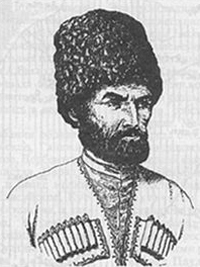 Fatali Khan of Guba (the years of reign: 1758-1788) After the death of Nadir Shah Afshar Fatali khan from Guba by uniting the Guba, Derbent, and Salyan khanates became known as a historical leader of the Eastern Caucasus. He called Shamakhi, Sheki, Baku khanates, Car-Balaken free society and Arash sultanate to the union and forced to use weapons against those refused to became united and in 1785 he annexed Sheki and in 1787 Shirvan khanate and little later Baku khanate. After thirty years of armed struggle, Fatali Khan succeeded to unite the major khanates of Azerbaijan.
|
